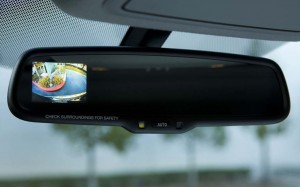The nation’s automotive safety chief has called for a last-minute delay before issuing new rules that could require all vehicles sold in the U.S. to be equipped with rearview cameras.
But in a letter to Congress, Department of Transportation Secretary Ray LaHood said he still hopes to have new standards in place before year-end, which indicates the government will almost certainly call for the use of the devices – estimating that if all future cars came equipped with backup cameras as many as 300 lives a year could be saved.
“I now anticipate the department can issue the final standards by Dec. 31, 2012,” LaHood said in a letter addressed to members of automotive safety oversight committees in both houses of Congresses. The delay suggests it will now be all but impossible to mandate the use of the technology on all cars, trucks and crossover by 2014 as many observers had expected.
A decision was originally due this week based on a 2007 law requiring the DoT to make it easier for motorists to see pedestrians who might be hidden behind their vehicle. The law came in response to several well-publicized incidents in which parents ran over small children who could not be seen out the back window or using the side mirrors of their vehicles.
So-called “backup cameras” have become increasingly popular on today’s cars, especially as manufacturers lower costs and introduce video display screens into vehicles to handle the task of controlling routine tasks like tuning a radio or adjusting interior temperature. Suppliers have also developed low-cost systems that display video images on a small screen otherwise hidden in a vehicle’s rearview mirror.
Manufacturers have continued to raise concern about costs, but proponents have argued that the benefits – especially considering that a large number of backup collision victims are children – are justified.
The original proposal by the National Highway Traffic Safety Administration estimated that 18,000 backup-related injuries occur each year, resulting in 292 fatalities. Of those incidents involving light vehicles, 44% of the fatalities occurred among children under the age of 5.
In his letter to Congress, LaHood said he called for the delay because, “further research and data analysis is important to ensure the most protective and efficient rule possible, including a wider range of vehicles and drivers.”
There appears to be one key point of concern that still divides regulators and auto manufacturers: just how quickly must the images from a backup camera be displayed once a driver shifts into reverse. The NHTSA wants a minimal one-second delay. The industry, citing the time needed to power up onboard electronics that might also handle complex infotainment duties, has asked for up to a 3-second delay.
However critics contend that is a long enough wait for a car to roll backwards several car lengths even without the driver pressing the accelerator.
Since the 2014 model-year would technically begin on January 1, 2013, it appears the delay in enacting a new backup camera rule would likely push back until at least calendar-year 2014 before manufacturers would be required to install the devices on all vehicles.

